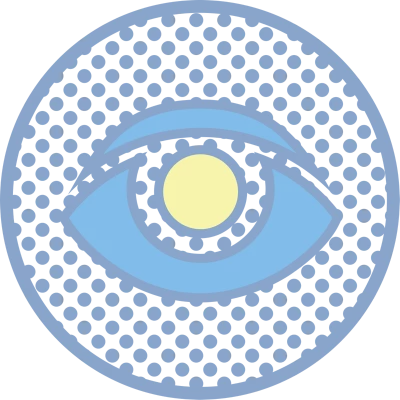Lamellar Cataract: Meaning, Symptoms & Causes Explained
Lamellar cataract, also known as zonular cataract or zonular lamellar cataract, is a distinct form of lens opacity. Unlike age-related cataracts, it often appears in defined layers, making it especially relevant in paediatric ophthalmology.
This article explores the meaning, causes, symptoms, diagnosis, treatment, and prevention of this condition.
What Is Lamellar Cataract?
A lamellar or zonular cataract is a specific lens opacity located in a laminar layer around the nucleus. Commonly congenital, it differs markedly from typical age-related cataracts.
Although the central visual axis may remain clear initially, the surrounding cloudy layer often leads to visual issues.

Causes of Lamellar Cataract
Genetic Predisposition
The congenital cataracts that occur as lamellae are often inherited using the autosomal dominant pattern. If one of the parents is a carrier of a gene mutation, the child has a high probability of developing a lamellar cataract.
Congenital Conditions
These cataracts can form before birth due to metabolic disorders, infections during pregnancy, or developmental abnormalities affecting lens structure.
New Gene Mutations
In some cases, the development of the lamellar or zonular cataracts is a consequence of the spontaneous mutations in genes linked to the lens. These mutations may be familial, and they should be advised with extensive genetic counselling.
Symptoms of Lamellar Cataract
Blurred or Cloudy Vision
The layered clouding disrupts light transmission, causing blurred vision that may go unnoticed in early stages.
Reduced Visual Acuity
Visual clarity is affected, resulting in subpar performance on standard eye test charts.
Night Vision Problems
Reduced contrast and increased glare can make night-time vision difficult, creating hazards for tasks such as driving or reading.
Light Sensitivity (Photophobia)
Light sensitivity is a common symptom, as scattered light causes discomfort and squinting.
Halos Around Lights
The diffraction of light by the opacity of the lens would cause patients to visualise halos or bursts of stars around any bright light object.

Preventing Lamellar Cataract
Early Detection
Regular eye tests in children and young adults, especially those with a family history of cataracts, can facilitate early recognition of lamellar or zonular cataracts.
Monitoring and Management
If vision remains stable, periodic monitoring is sufficient. Changes in acuity or contrast warrant surgical intervention.
Healthy Lifestyle
Maintaining general health through a balanced diet, good hydration, and avoidance of smoking supports long-term ocular health.
Sun Protection
Wearing sunglasses with UV protection reduces lens damage and slows the progression of cataracts, even for non-age-related types.
Diagnosing Lamellar Cataract
Visual Acuity Test
Routine eye test evaluations assess clarity, contrast, and refractive changes associated with zonular lamellar cataract.
Slit-Lamp Examination
Under high magnification, professional eye specialists can see the lamellar layer covering the nucleus of the lens, which helps determine the classification of cataract.
Scheimpflug Imaging
The photographic modality is a cross-sectional method that charts levels of lens opacity and measures lens density, an active step in determining the degree of lamellar cataracts.
Optical Coherence Tomography (OCT)
While OCT focuses on the retina and optic nerve, it helps detect signs of associated conditions, ensuring a comprehensive ocular evaluation.
Treatment Options for Lamellar Cataract
Phacoemulsification
The technique of removing cataracts using ultrasound and small incisions is commonly employed in both congenital and adult cases. Emulsification of the opaque layer is done, and the intraocular lens (IOL) is implanted.
Laser-Assisted Cataract Surgery
Laser-assisted techniques ensure precise incisions and capsulotomy. This precision is particularly useful in zonular lamellar cataract surgery.
Intraocular Lens (IoL) Selection
Upon removal of lenses, a proper IOL should be selected, based on the patient’s lifestyle and health. There are options for monofocal, toric lenses, and in some instances, accommodating lenses.
Conclusion
Lamellar cataract is a unique form of lens opacity that often appears early in life due to genetic or developmental factors. Symptoms such as blurred vision, light sensitivity, and glare can significantly affect quality of life.
Early diagnosis, achieved through slit-lamp exams and Scheimpflug imaging, helps determine the best approach, whether it involves monitoring or surgery. Phacoemulsification followed by the correct choice of IOL provides great results.
Ocular health is promoted through preventive measures, which include regular eye exams, sun protection, and a healthy lifestyle. Do not wait to access an eye test or consultation by a paediatric ophthalmology specialist in case you or your child has a visual change.
Frequently Asked Questions (FAQs) about Lamellar Cataract
Is Lamellar Cataract Hereditary?
Yes, lamellar cataracts are usually hereditary and often result from autosomal dominant inheritance, which means that a child has a 50% risk of inheriting the disease when one of their parents has a gene mutation. Families having a history of congenital or lamellar cataracts (or both) should be advised to undergo genetic counselling to learn about their risks and the inheritance mechanisms.
How Do Lamellar Cataracts Differ from Other Cataract Types?
Lamellar cataracts are different in that the opacity is localised on one or several layers of the lens, and that is often around the nucleus. The lens is usually congenital. Age-related cataract, on the other hand, typically affects all parts of the lens and develops over time. Lamellar cataracts can lead to vision complications at an early age, and these are typically related to genetic factors.
Can Lamellar Cataracts Affect Both Eyes?
Indeed, Lamellar cataracts often occur in both eyes, especially when they are congenital. The visual impairment and the level of opacity in the eyes can vary between the two eyes. Bilateral participation usually requires a thorough examination by a paediatric ophthalmologist to monitor and observe visual development and determine whether one or both eyes need surgery.
How Long Does Recovery Take After Lamellar Cataract Surgery?
The results of lamellar cataract surgery show that recovery time can range from a day to a week, with an average of a few weeks, depending on the rate of healing and whether a patient has had a single eye or both eyes operated on. Visual improvement is observed during the 1st week in most patients. It is vital to check the progress and to follow up regularly with the ophthalmologist to plan the next course of action.
Are There Any Non-Surgical Treatments for Lamellar Cataracts?
There is not much that can be done about lamellar cataracts without surgery. In cases where the cataract is not severe and does not cause major vision problems, doctors may suggest wearing glasses and therapy to improve sight. Nevertheless, in the case of impaired vision, surgery is the preferred method of treatment. The problem can be addressed through early diagnosis, which is achieved through regular eye screenings.
This information is for general awareness only and cannot be construed as medical advice. Recovery Timelines, specialist availability, and treatment prices may vary. Please consult our specialists or visit your nearest branch for more details.Insurance coverage and associated costs may vary depending on the treatment and the specific inclusions under your policy. Please visit the insurance desk at your nearest branch for detailed information.

Do not ignore eye trouble!
Now you can reach our senior doctors by booking an online video consultation or a hospital appointment
Book an appointment now